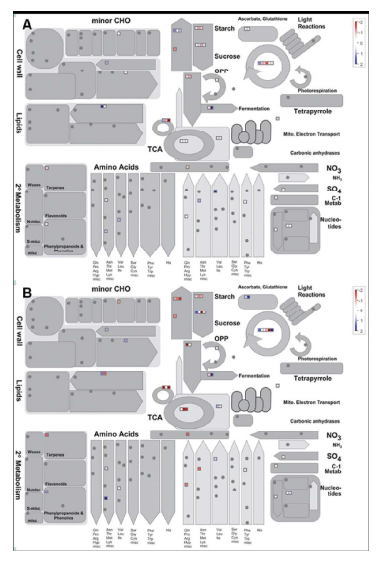Name:
Tell:
Email:
Organization:
New Insights into Distinct Roles of Embryo and Endosperm in Rice Seed Germination
2014-10-10
Rice, one of the most important cereals, feeds more than half of the world population. Successful germination of rice seed is essential for its cultivation and production. Rice seed consist is composed of embryo and endosperm with embryo being of much significance despite its small size. Therefore, it is of great importance to study how the embryo and endosperm communicate with each other and execute their functions.
Under the supervision of Prof. YANG Pingfang from Wuhan Botanical Gardn, PhD. student HAN Chao conducted a systematic proteomic analysis focusing on the embryo dissected from rice seed at different stages of germination through a combination of gel-based and gel-free strategies.
Totally, 343 differentially expressed proteins were identified. Based on MapMan analysis, all these proteins could be divided into 11 functional groups. Three starch biosynthesis related enzymes, including starch branching enzyme (SBE), granule-bound starch synthase 1 (GBSS1) and starch synthase (SS) , increased during early stage of germination and then decreased at the late stage, which was similar with the expressional patterns of glycolysis related enzymes. However, tricarboxylic acid cycle related enzymes only increased at the late stage.
It was also found that sucrose might be an important intermediate for the biosynthesis of starch in embryo during germination. Moreover, gel-based proteomic analysis on the dissected endosperm showed that the biological processes in endosperm were heavily regulated by the embryo. This study could certainly facilitate a better understanding of the distinct roles of the embryo and endosperm in rice seed germination.
Results were published in Plant and Cell Physiology entitled “In-depth proteomic analysis of rice embryo reveals its important roles in seed germination”. This work was supported by the National Natural Science Foundation of China, 100 talents program of Chinese Academy of Sciences, and Sino-Africa Joint Research Project.

MapMan analysis showing the changes of different metabolic pathways during germination (Image by HAN Chao)